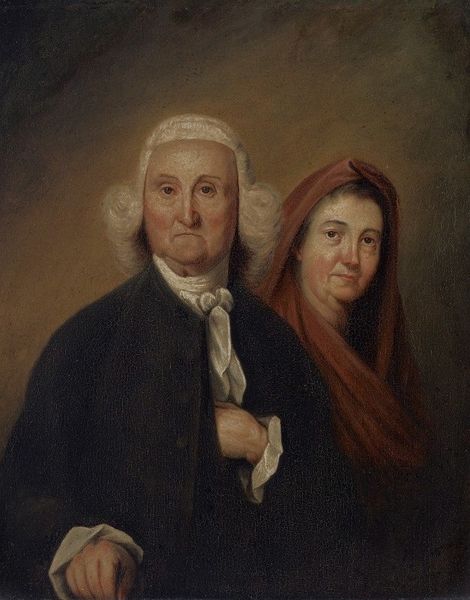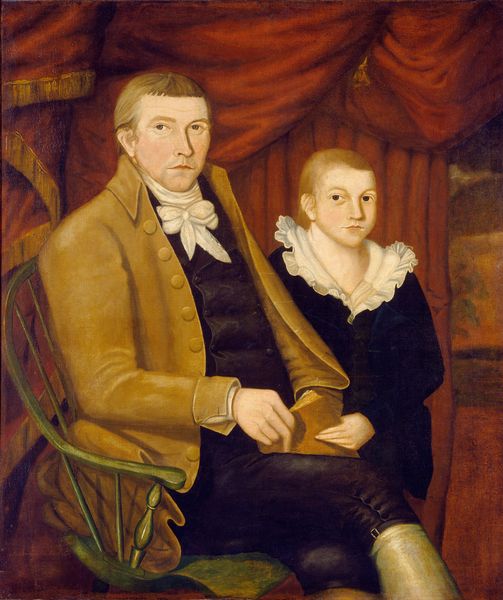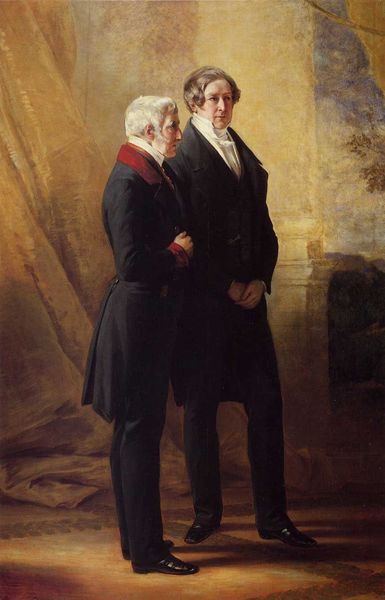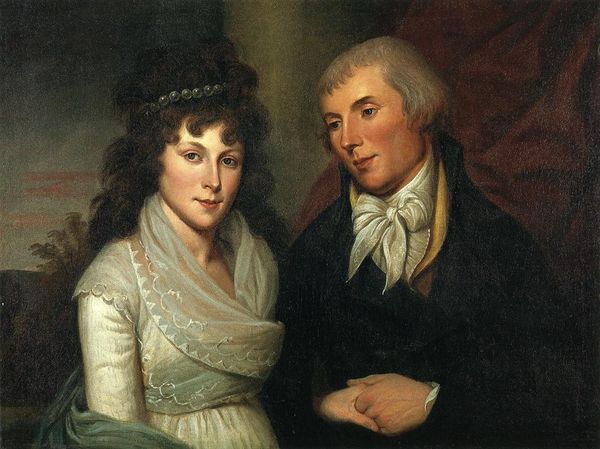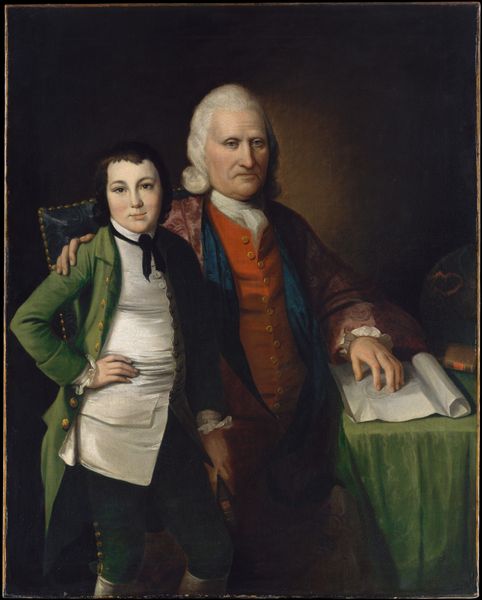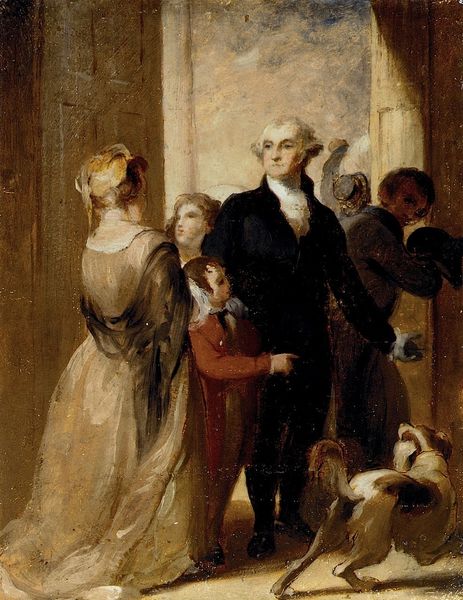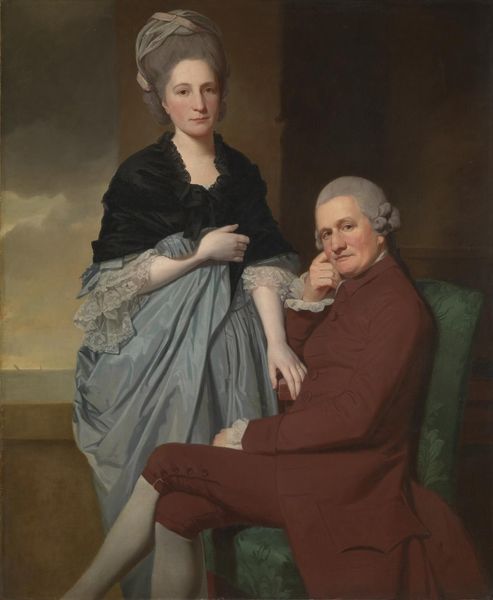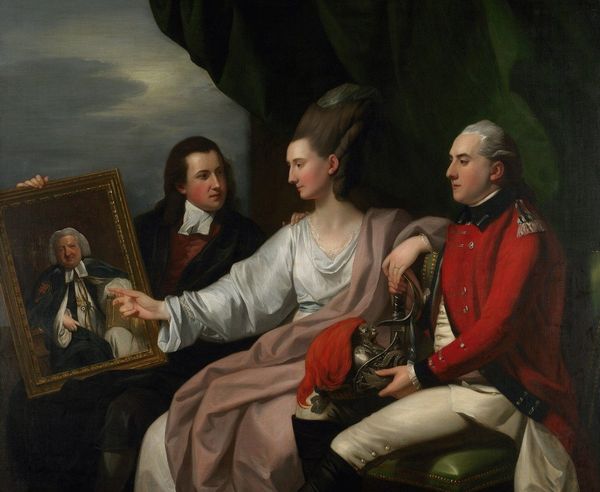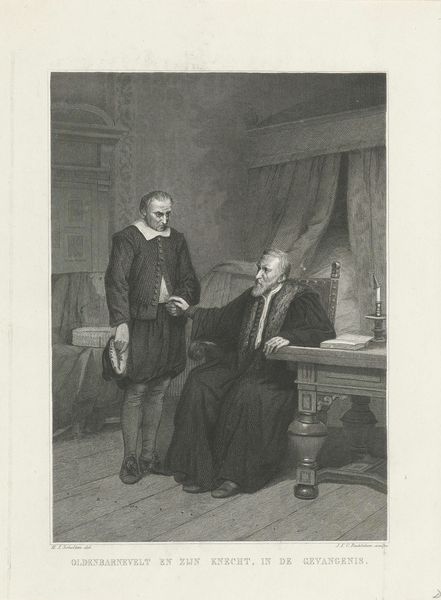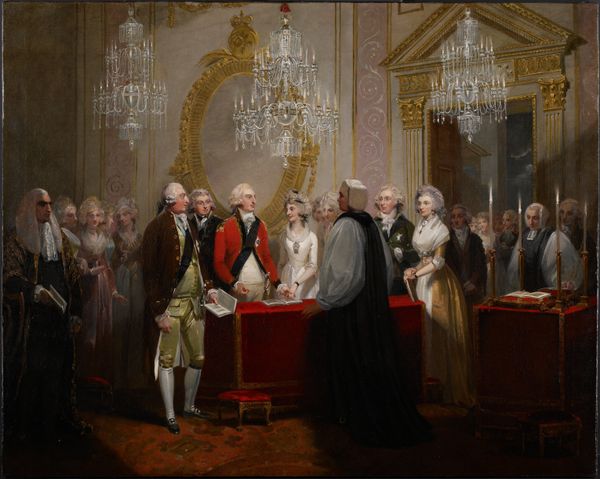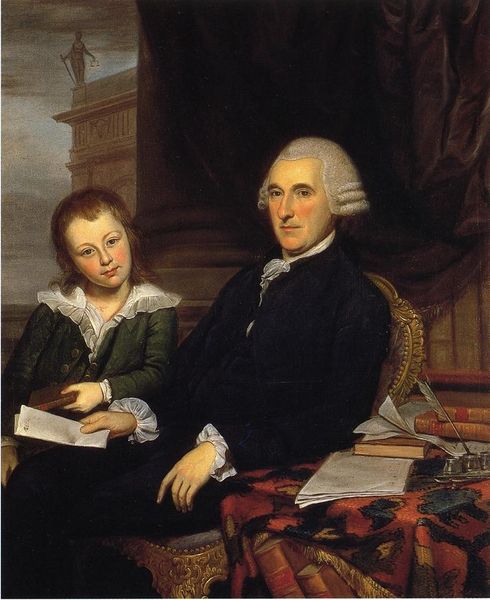
Dimensions: 123.8 x 102.87 cm
Copyright: Public domain
Curator: This is John Singleton Copley's "Mr. and Mrs. Isaac Winslow," painted in 1773. Editor: There's an air of formality and constraint in this image, wouldn’t you say? They seem carefully positioned. Curator: Precisely. It speaks to the social position the Winslows wished to project. Isaac Winslow, descended from early settlers, was a wealthy merchant. A portrait like this broadcasts status and solidifies their place within Boston's elite. Editor: It’s striking how much symbolism resides even in the clothing. Her elaborate dress, his simple attire...they both quietly proclaim their economic status. Her gentle hands suggest that of a non-laborer and his hands gripping a writing utensil signifies learning and scholarly attributes, wouldn't you say? Curator: Indeed. Winslow's gesture, along with her jewelry, subtly reinforces their refinement. Their calm expression conveys decorum and control, key values of the era. What strikes me most is the negotiation Copley had to make; as he walks this line between flattering his sitters while hinting at underlying tensions within a society hurtling toward revolution. Editor: It's remarkable how much information is packed into a single image. It's like decoding a whole culture through their self-presentation. Curator: It makes you ponder the complex role of portraiture at the time. It was not just about resemblance, but about constructing and negotiating identity in a rapidly changing society. Portraits helped solidify that person in history. Editor: I can see a tension as well: wanting to represent yourself truthfully versus trying to present the ideal persona you want others to perceive. I do enjoy observing all that lies between the brushstrokes of history! Curator: Me too. Each portrait offers a window into not only the sitter's life, but into the era's complex power structures, anxieties and ambitions.
Comments
No comments
Be the first to comment and join the conversation on the ultimate creative platform.

